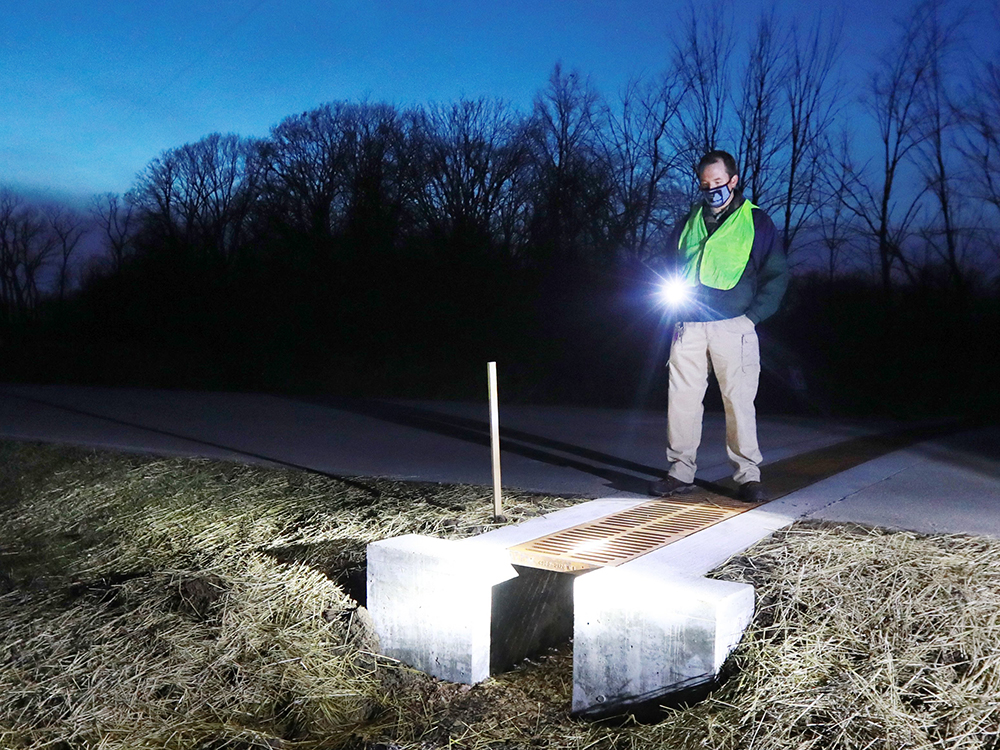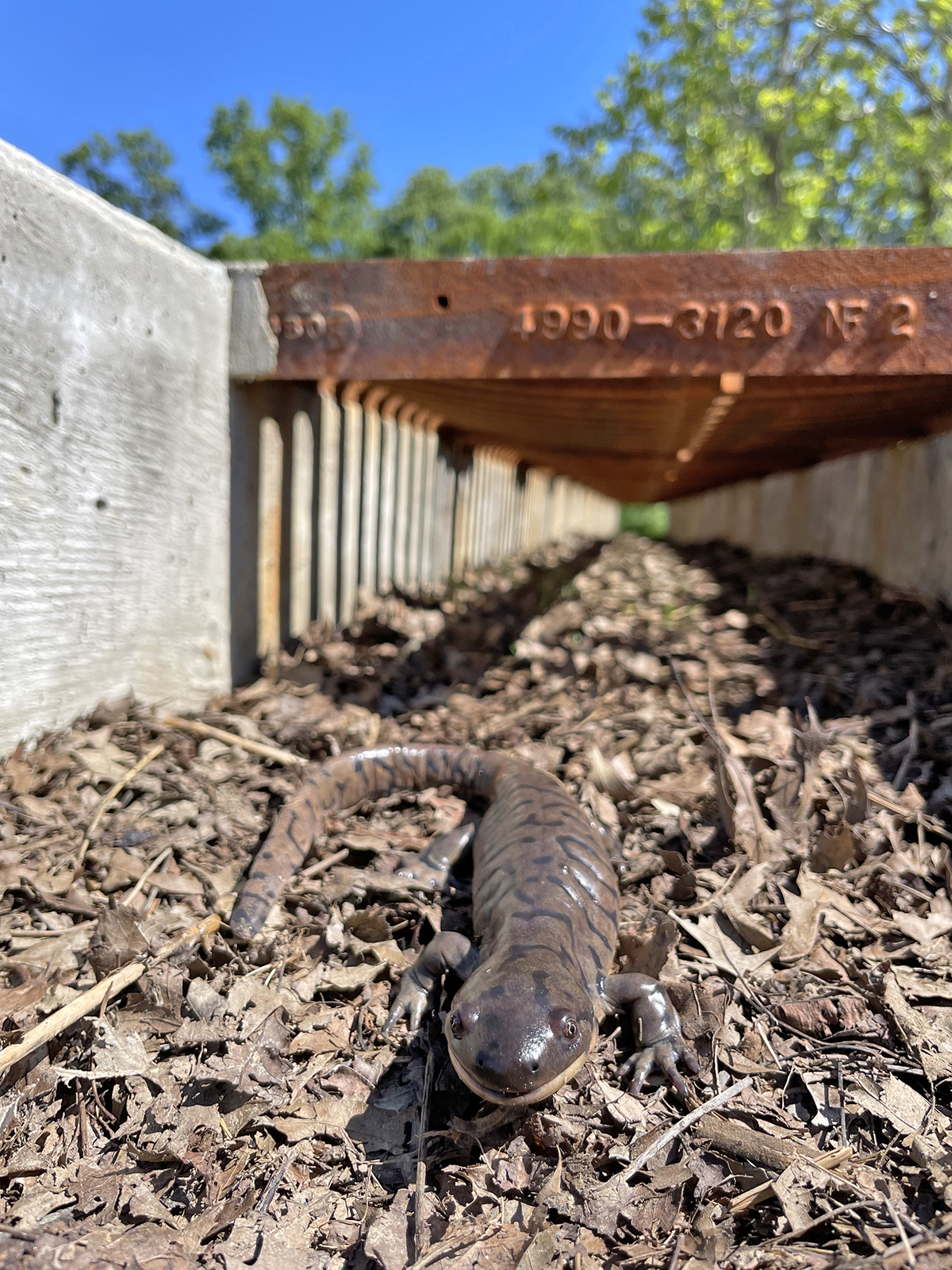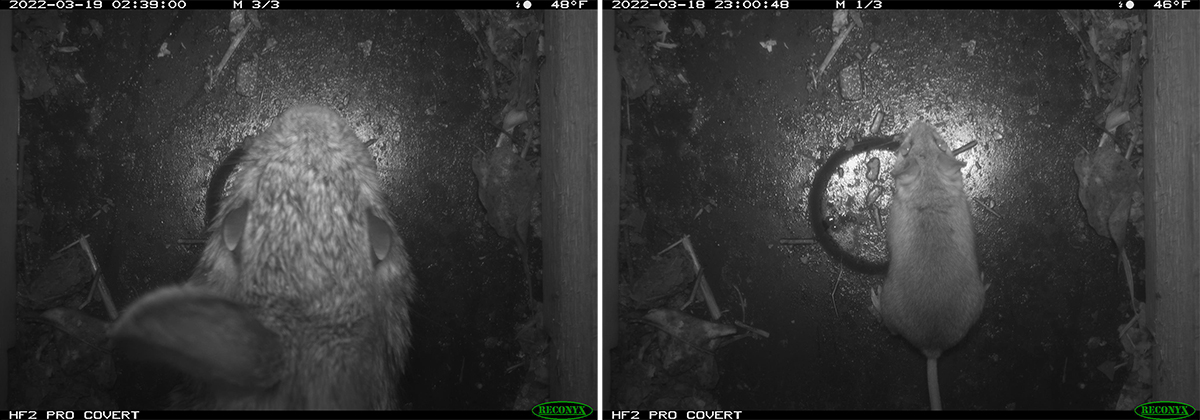CRAIG BIEGLER
Naturalist – Battelle Darby Creek Metro Park

Over the last few years, Battelle Darby Creek Metro Park staff noticed that an alarming number of animals were being killed on the roads around the park. On certain nights, hundreds of frogs would be crushed while migrating to their breeding sites. Other times we would see dozens of dead snakes or turtles that had been killed while trying to nest. Knowing that the problem would only get worse, multiple departments came together to make a difference.
In 2020, our resource management team and park staff worked with the engineering consultants at Burgess & Niple to design two wildlife tunnels on Jack McDowell Way, the park road leading to the nature center. The hope was that these would serve as migration routes for the amphibians we had seen nearby. Once the design was approved, construction was done by the Metro Parks roving crew and Battelle Darby Creek maintenance staff. Concrete trenches were dug across the existing road, then lined with leaf litter. Rather than a solid roof, the tops of the tunnels are metal grating. In order to save money and resources, these grates were taken from the old entrance to Sharon Woods Metro Park, where they were used to keep deer out of the park. Now they have a new purpose: they allow rain and light to enter the tunnels, providing a more comfortable passageway than an enclosed structure would. The grates are removable, so staff can access any part of the tunnel from above. Finally, a silt fence was installed along the road in order to force animals towards the tunnels.

By spring 2021, construction was complete and staff and volunteers began monitoring amphibian and reptile activity around the tunnels. We recorded five species using the tunnels that first season: spring peeper, western chorus frog, northern leopard frog, American toad, and eastern garter snake.
Despite making some changes and getting an earlier start, the 2022 survey season was limited by poor weather. Amphibians prefer to migrate during particular conditions: in February and March, after dark, in the rain, and when it’s warmer than 50 degrees F. We just didn’t get very many of those nights this spring, and only the peepers, chorus frogs, and leopard frogs were seen in the tunnels.
Special thanks to the volunteers who spent hours in the rain to help us count frogs!
While we enjoyed watching the tunnels in action, we also wanted to know what was happening when we weren’t there. In 2022, we set up a special camera system inside one of the tunnels. We use a normal trail cam that has been modified to photograph small animals. This camera is housed in a special container that forces animals to pass directly under the sensor and reduces the number of false triggers. This has really opened up our knowledge of how animals use the tunnels, especially those that might be scared by our presence during the surveys.

In just a few months, this camera has photographed around 150 animals using the tunnel. Additional species include white-footed mouse, fox squirrel, Dekay’s brown snake, and various invertebrates. We plan to leave the camera up through the summer and fall. As the seasons change, we are excited to see what other animals come to get their picture taken!

This project is constantly evolving. The next few weeks will see some major fixes to the fencing in order to make it a more effective barrier. The camera setup could use some tweaking; some animals move so fast that we only catch photos of the tip of a tail, or even just wet footprints! As we make changes, we learn more about what works and what doesn’t. Changing the behavior of wild animals is complicated and difficult, even when it’s for their own safety. We hope to take everything we learn and apply it to additional areas of this park and others, keeping as many animals off the road as possible.

thank you !!! this is amazing now if someone could figure out how to save the deer from getting killed !!!
I had the same thought. My heart breaks every time I seen a dead animal on the roads. Wish I could save all living creatures from being harmed, whether intentional or accidental, from humans!
Great job!!!! I wish we could do this for larger animals as well over major highways, etc. Thank you!!!!